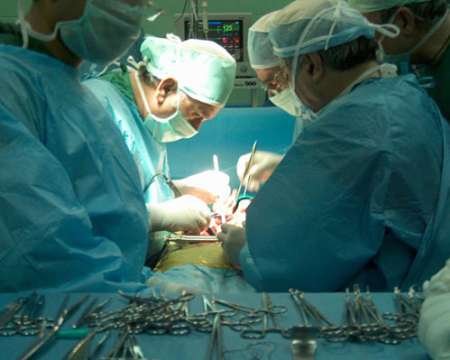ID :
342723
Sat, 09/27/2014 - 14:11
Auther :
Shortlink :
https://oananews.org//node/342723
The shortlink copeid
Iranian Congress To Detail Bladder Reconstruction

Tehran, Sept 27, IRNA - Dr. Abbas Basiri, urologist and nephrologist, will describe the details of bladder reconstruction surgery at the 7th Congress of Iranian Endourology and Urolaparoscopy Society to be held at Tehran’s Labbafinejad Hospital from October 1 to 3.
Basiri explained that the method is useful for patients who have a diseased or damaged bladder due to bladder cancer.
“In this method, part of the small intestine is configured into a sphere and used to replace the damaged bladder,” he said.
The expert added that bladder cancer is the most prevalent cancer among urinary tract cancers.
Basiri also said the method can help patients enjoy normal routines and a better quality of life.
Distinguished Iranian and international professors will share their experiences with colleagues in the form of lectures, panel discussions, debates and live surgeries format.
Newest technologies and devices in endourology and laparoscopy will be presented at an exhibition, which will be held on the sidelines of the event.
When the bladder is removed, surgeons use procedures known as urinary diversions to restore urinary function. Urinary diversions are done at the same time as radical cystectomy (robotic or through a traditional surgical incision).
Ileal neobladder: Part of the ileum (small intestine) is used to make a new bladder, allowing for “normal” urination. This procedure works best on men. It provides good daytime urinary control, with about a 20-percent chance of nighttime incontinence. Some women may have trouble completely emptying the neobladder and may sometimes need to use a catheter. This technique uses about 20 inches of small intestine that is configured into a sphere. Removing this small amount of intestine has no adverse effects on bowel function.
Ileal conduit: A piece of small intestine is used to create a “pipe” that connects ureters to the surface of the skin in the navel. Urine is directed to a urostomy bag worn on the outside of the body.
Continent reservoir: Intestinal tissue is used to create an internal pouch that is connected to the navel. The patient uses a catheter to drain the pouch./end





